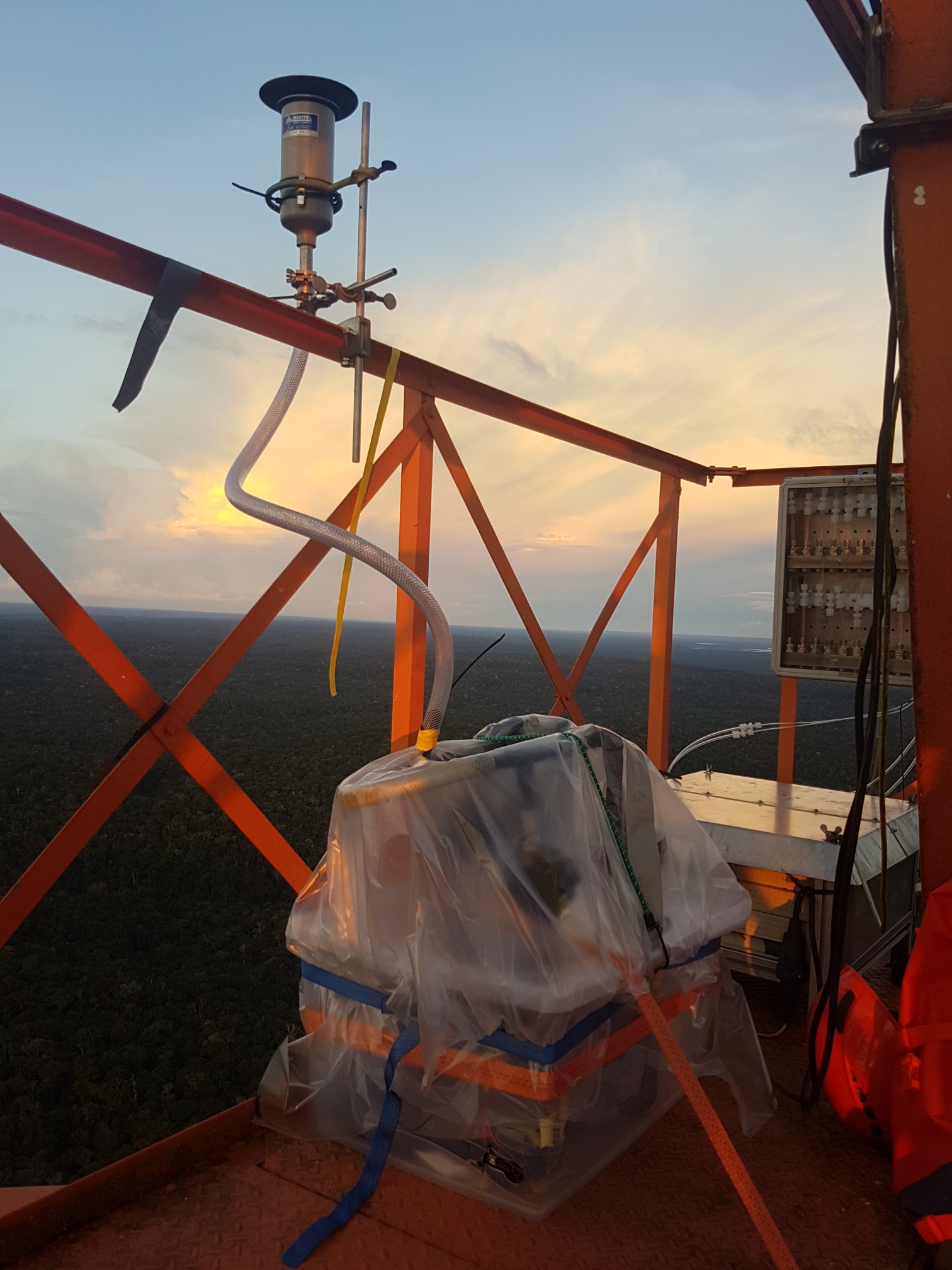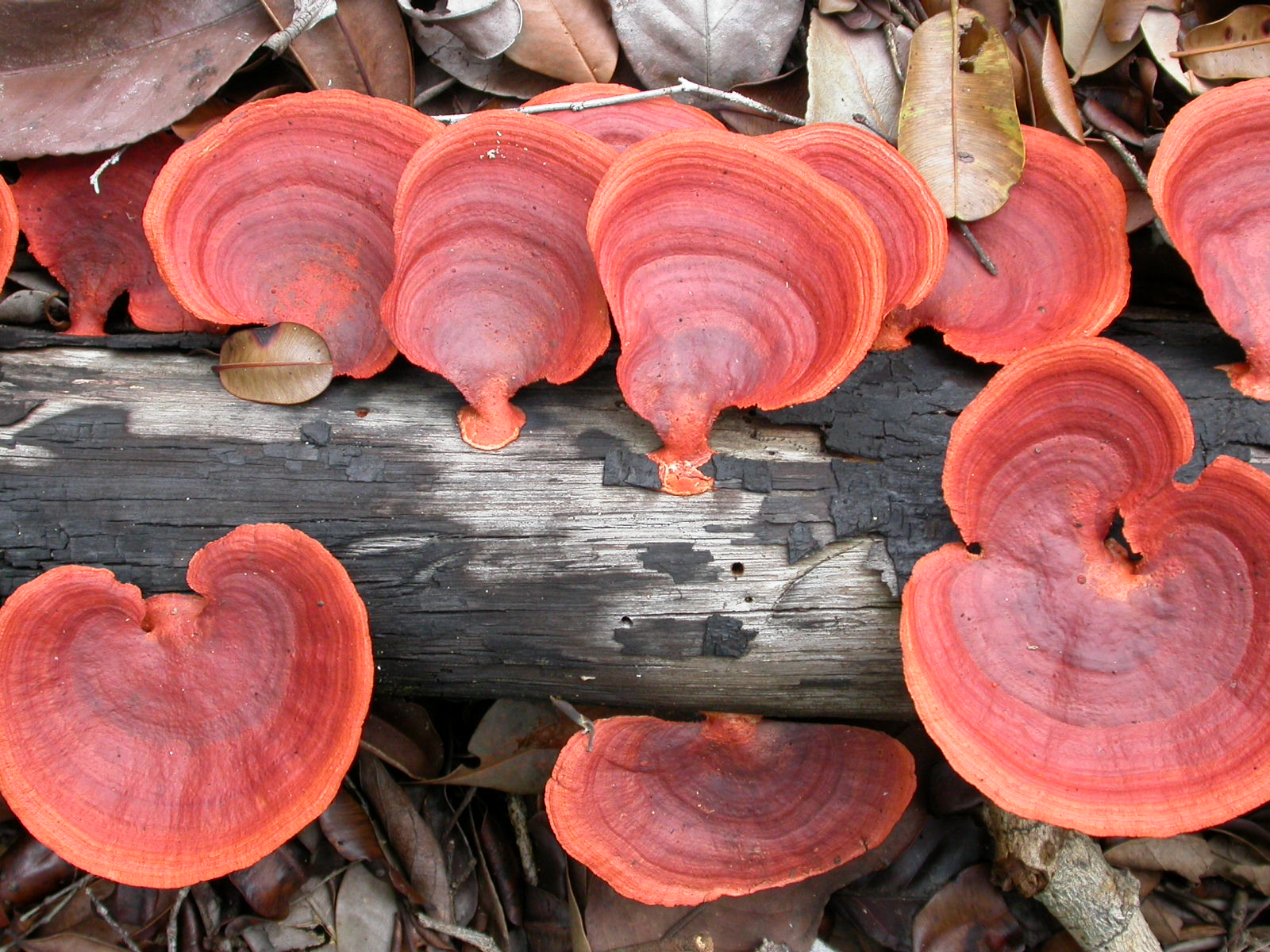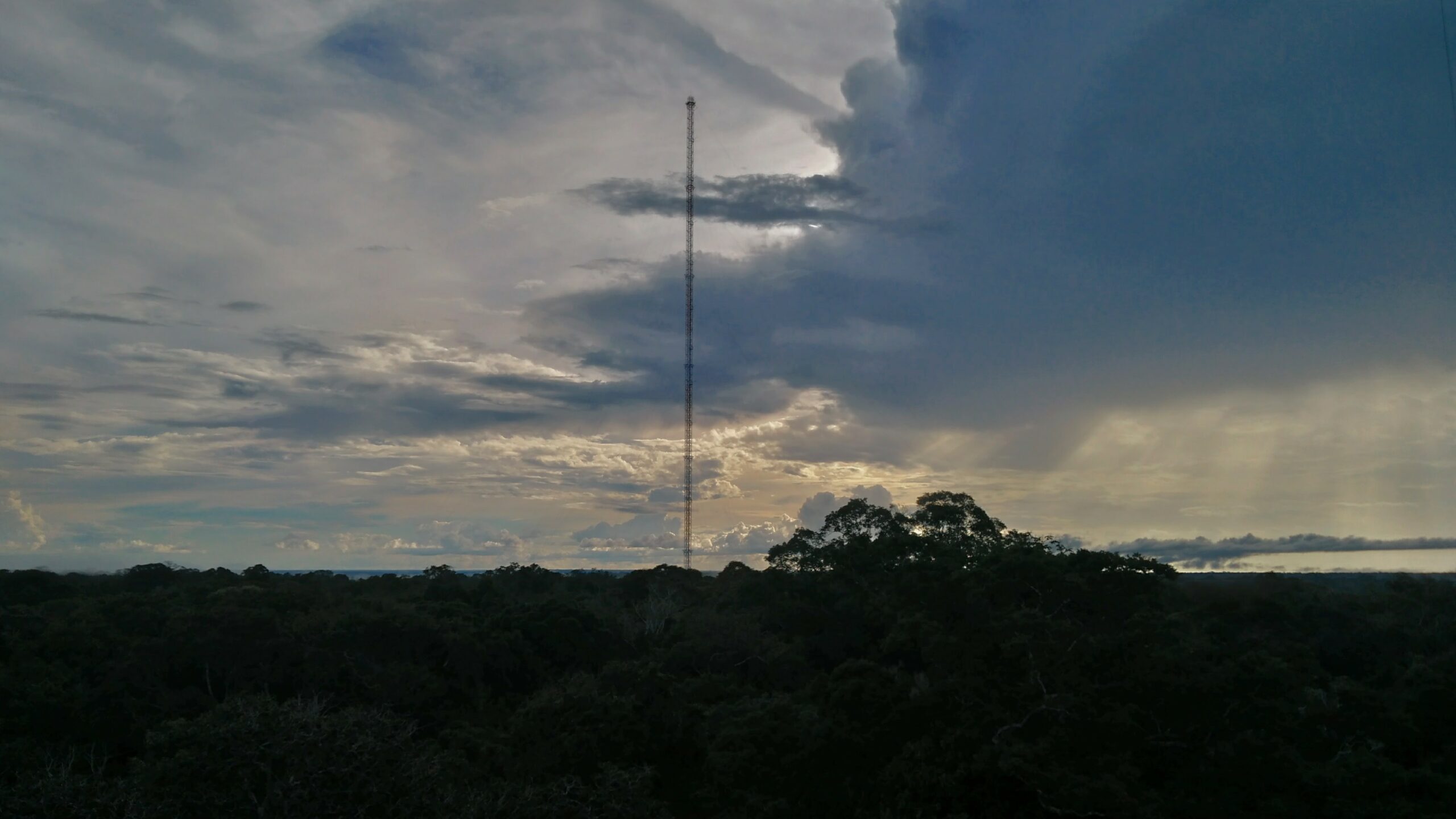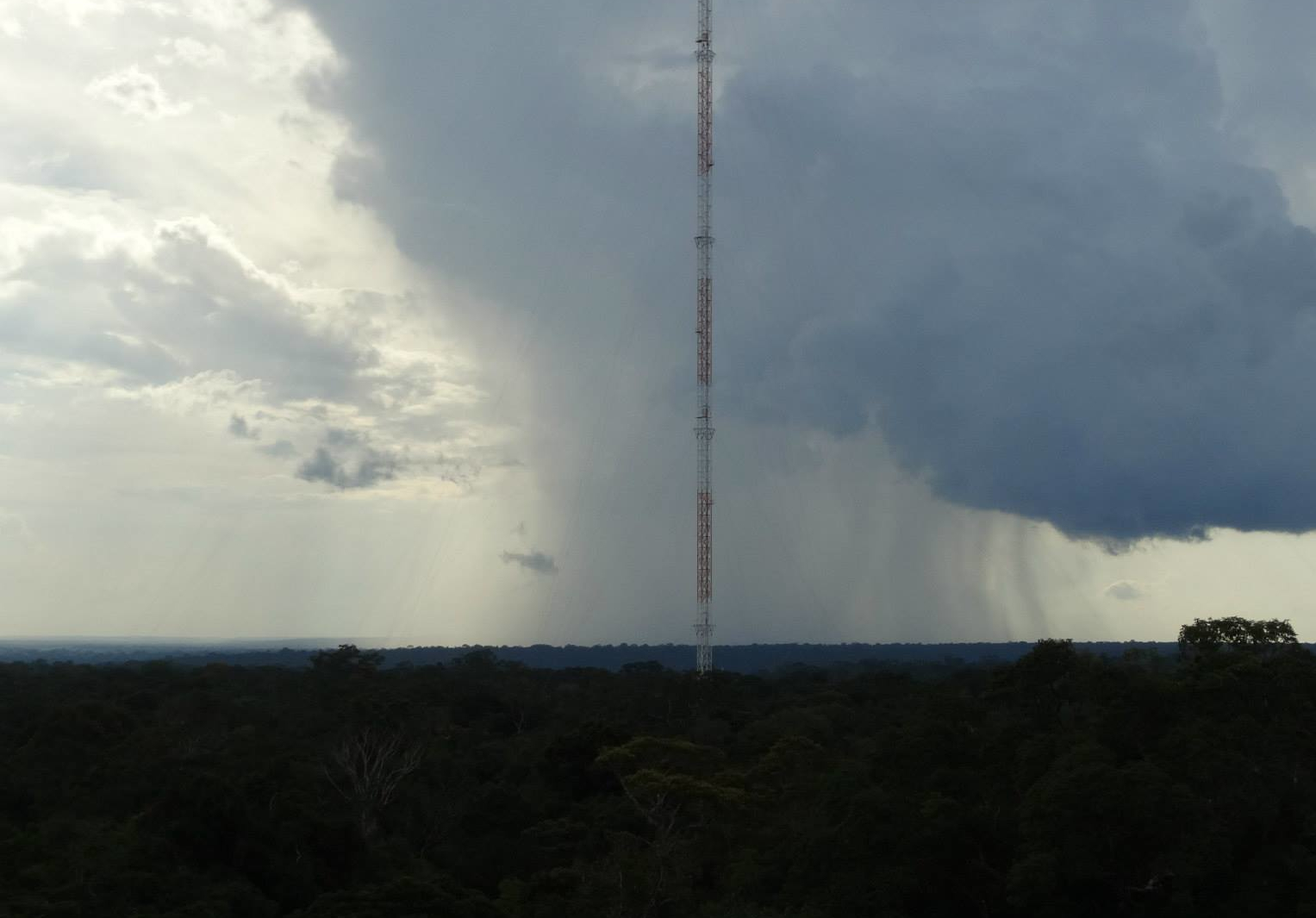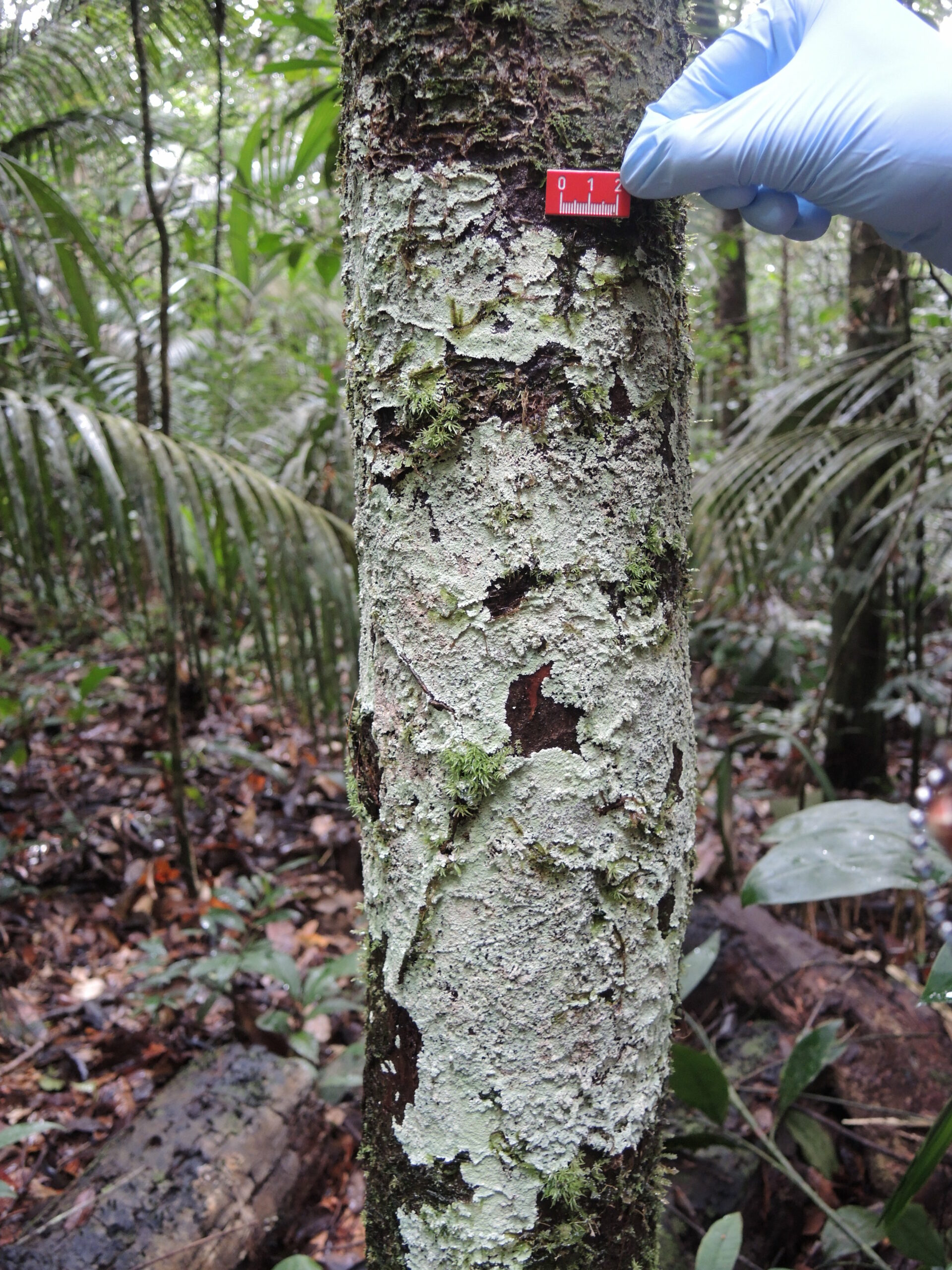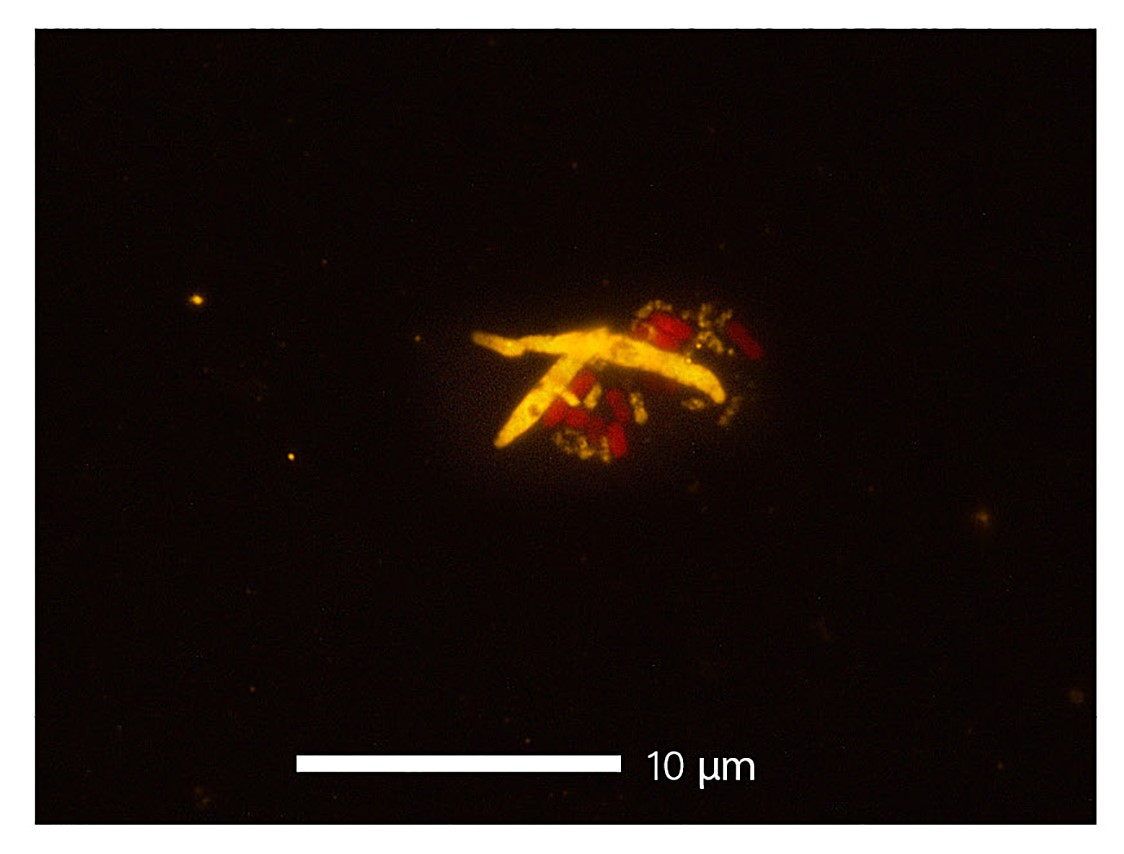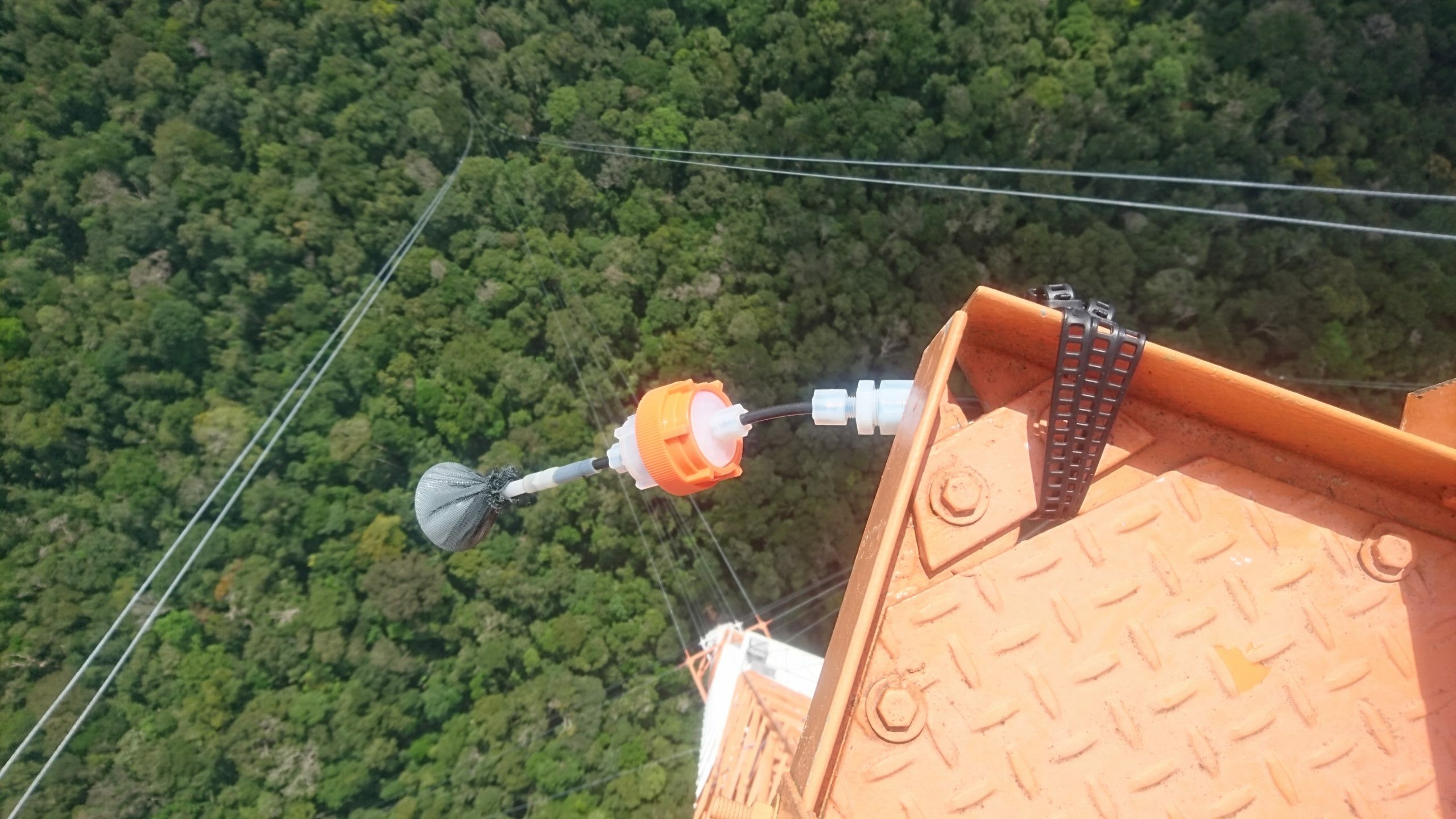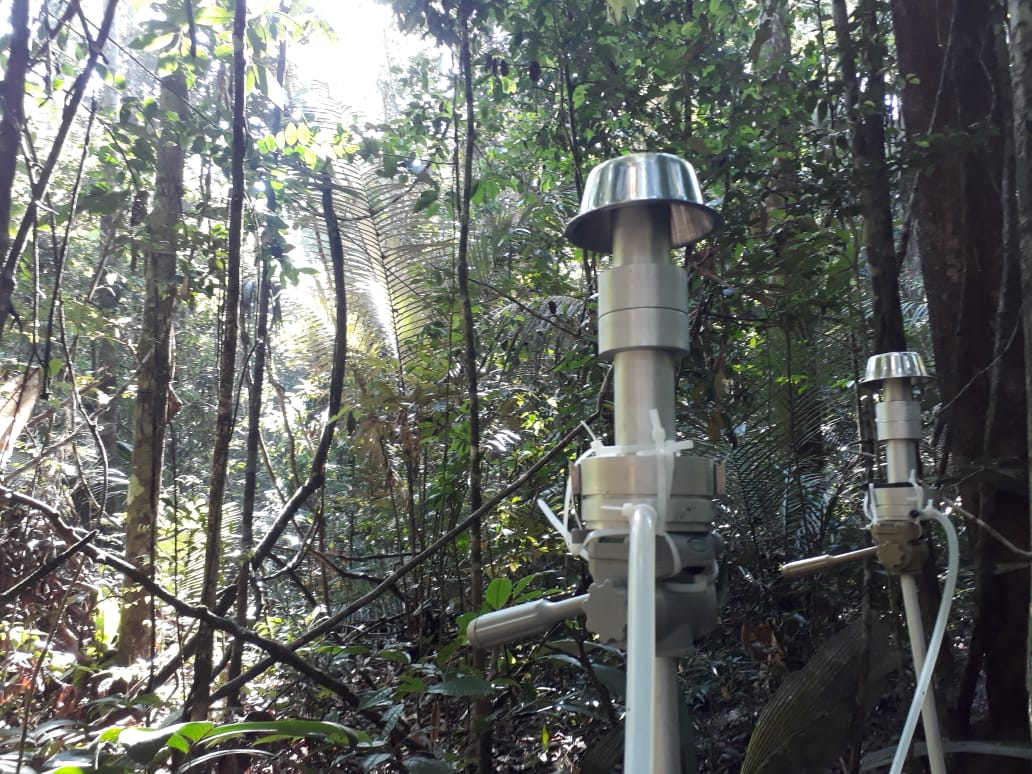Very recently, a study from ATTO revealed what kind of plant and fungi species are present in the Amazonian atmosphere across all particle sizes. Another study now focuses on so-called “giant bioaerosol particles” larger than 5 µm. The main focus of this new study was to identify how the distribution of different types of particles in this large size fraction changes with height. The scientists also wanted to find out if changes in weather and climate affect particle distribution and composition.
Giant bioaerosol particles
Particles in this size range typically include pollen grains and fungi spores. The team around Cybelli Barbosa was interested in their distribution patterns because they carry genetic information for pollination, colonization and infection. Scientists also believe that pollen and large spores might undergo long-distance transport and influence local precipitation processes. However, we know little about their abundance in the air above the canopy. Most prior studies have looked at distribution patterns only at ground level and focused on temperate regions.
Labor-intensive work
But now the team set out to look at distribution patterns of such giant bioaerosol particles in the near-pristine atmosphere at the ATTO site.
Over a time period of five years, Cybelli Barbosa and her colleagues performed eight intensive sampling campaigns, during both the wet and dry seasons. To collect the air samples, they climbed the 80m tower and tall tower every day, no matter how hot or wet it was.
They then individually identified the incredible number of 500 000 individual particles with a light microscope. This tremendous effort took several months and included inspecting each induvial particle and measuring its size. This allowed the team to categorize the particles into the main groups: pollen, spores (fungi, fern, bryophyte), canopy residues (leaf/wood parts, glands, insect parts, amorphous plant and fungal debris), and non-organic particles.
The effort was worth it though because the scientists made some exciting and a few surprising discoveries.
Exciting discoveries
Thanks to their manual microscopic analysis, the team found lots of giant bioaerosol particles beyond pollen and spores. The samples contained lots of canopy debris that consisted of fragments of plant and fungal tissue. This debris made up around two-thirds of all particles in many of the samples. Some of this debris contains DNA and therefore could readily be mistaken for pollen or spores in genetic analyses.
Second, the amounts of coarse and ‘giant’ bioaerosols high above the Amazon rainforest decreased substantially compared to right above the canopy. This suggests that many of these particles stay close to where they are created and dispersed. Long-range transport and cloud interaction due not seem to be a large factor. For that, the particles would be to be transported higher up.
However, times, when there were peaks in pollen abundance above the canopy, coincided with increased wind speeds associated with convective thunderstorms. On the other hand, precipitation and increased relative humidity lead to decreasing numbers of giant particles, as rain washes them out of the air.
Crucially, with this ‘limited’ transport range, the large fungi spores and pollen particles have a strong influence on rainfall periods locally for this tropical area. This might guide future studies on the role of giant bioaerosol particles in precipitation cycles.
Thirdly, the team assembled the first-ever illustrated inventory of all their analyzed bioaerosols. This atlas of “Bioaerosols from the Brazilian Amazon Rainforest: Pollens and Spores” is freely available online, in bilingual form (English and Portuguese), in addition to the publication of the study.
Barbosa et al. published the study “Identification and quantification of giant bioaerosol particles over the Amazon rainforest” Open Access in npj Climate and Atmospheric Science. doi: 10.1038/s41612-022-00294-y
Similar articles
More soot particles enter the central Amazon rainforest from brush fires in Africa than from regional fires at certain times.
In a new study, Denis Leppla, Thorsten Hoffmann and their colleagues looked at pinic acid and its chiral forms. Pinic acid forms in the atmosphere through SAO formation from α-pinenes. The team wanted to find out how the chemical reactions in the atmosphere affect the chirality of its product pinic acid.
Bioaerosols influence the dynamics of the biosphere underneath. In a new study, Sylvia Mota de Oliveira and her colleagues used the ATTO site to collect air samples at 300 m above the forest. Then, they used DNA sequencing to analyze the biological components that were present and figure out what species of plant or fungi they belong to. One of the most striking new insights is the stark contrast between the species composition in the near-pristine Amazonian atmosphere compared to urban areas.
In a new study, Marco A. Franco and his colleagues analyzed when and under what conditions aerosols grow to a size relevant for cloud formation. Such growth events are relatively rare in the Amazon rainforest and follow and pronounced diurnal and seasonal cycles. The majority take place during the daytime, and during the wet season. But the team also discovered a few remarkable exceptions.
It is long known that aerosols, directly and indirectly, affect clouds and precipitation. But very few studies have focused on the opposite: the question of how clouds modify aerosol properties. Therefore, Luiz Machado and his colleagues looked into this process at ATTO. Specifically, they studied how weather events influenced the size distribution of aerosol particles.
Mosses and lichen appear to play a previously overlooked but important role in the atmospheric chemistry of tropical rainforests. A new study from Achim Edtbauer and colleagues shows that such cryptogams emit highly reactive and particle-forming compounds (BVOCs) that are important for air quality, climate, and ecosystem processes.
The Amazon rain forest plays a major role in global hydrological cycling. Biogenic aerosols, such as pollen, fungi, and spores likely influence the formation of clouds and precipitation. However, there are many different types of bioaerosols. The particles vary considerably in size, morphology, mixing state, as well as behavior like hygroscopicity (how much particles attract water) and metabolic activity. Therefore, it is likely that not only the amount of bioaerosols affects the hydrological cycle, but also the types of aerosols present.
Bioaerosols may act as cloud condensation nuclei and ice nuclei, thereby influencing the formation of clouds and precipitation. But so far there is less knowledge about the ice nucleation activity of each bioaerosol group and atmospheric models hitherto have not differentiated between them. Patade et al. created a new empirical parameterization for five groups of bioaerosols, based on analysis of the characteristics of bioaerosols at ATTO: fungal spores, bacteria, pollen, plant/animal/viral detritus, and algae. This makes it possible for any cloud model to access the role of an individual group of bioaerosols in altering cloud properties and precipitation formation.
Biogenic volatile organic compounds remove OH from the atmosphere through chemical reactions, which affects processes such as cloud formation. In a new study, Pfannerstill et al. reveal the important contributions of previously not-considered BVOCs species and underestimated OVOCs to the total OH reactivity.
Felipe Souza, Price Mathai and their co-authors published a new study analyzing the diverse bacterial population in the Amazonian atmosphere. The composition varied mainly with seasonal changes in temperature, relative humidity, and precipitation. On the other hand, they did not detect significant differences between the ground and canopy levels. They also identified bacterial species that participate in the nitrogen cycle.




